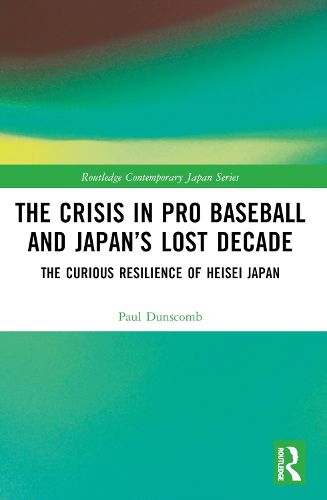Readings Newsletter
Become a Readings Member to make your shopping experience even easier.
Sign in or sign up for free!
You’re not far away from qualifying for FREE standard shipping within Australia
You’ve qualified for FREE standard shipping within Australia
The cart is loading…






This book examines Japan's Heisei era through the lens of the crisis in Japanese professional baseball of 2004, challenging the narrative of decline that dominates the discourse on the period.
The story of this crisis reveals much about the Japanese psyche during the "Lost Decade," about the nature of change during Heisei Japan and of the nation's resilience. The business of professional baseball provides crucial insights as it achieved its basic form at the same time as Japan's postwar political economy, and shared many characteristics with it, including systemic inefficiencies that post-"bubble" Japan could no longer sustain. The book traces how the crisis unfolded and the cast of characters who appeared during it (including team owners, players, IT entrepreneurs and ordinary fans), revealing much about the push and pull of continuity and change in Japan.
Featuring an in-depth analysis of the key participants and developments of the crisis in baseball, this book will be a valuable resource for students and scholars of sports management, Japanese history and Japanese culture, particularly of the Heisei era.
$9.00 standard shipping within Australia
FREE standard shipping within Australia for orders over $100.00
Express & International shipping calculated at checkout
This book examines Japan's Heisei era through the lens of the crisis in Japanese professional baseball of 2004, challenging the narrative of decline that dominates the discourse on the period.
The story of this crisis reveals much about the Japanese psyche during the "Lost Decade," about the nature of change during Heisei Japan and of the nation's resilience. The business of professional baseball provides crucial insights as it achieved its basic form at the same time as Japan's postwar political economy, and shared many characteristics with it, including systemic inefficiencies that post-"bubble" Japan could no longer sustain. The book traces how the crisis unfolded and the cast of characters who appeared during it (including team owners, players, IT entrepreneurs and ordinary fans), revealing much about the push and pull of continuity and change in Japan.
Featuring an in-depth analysis of the key participants and developments of the crisis in baseball, this book will be a valuable resource for students and scholars of sports management, Japanese history and Japanese culture, particularly of the Heisei era.